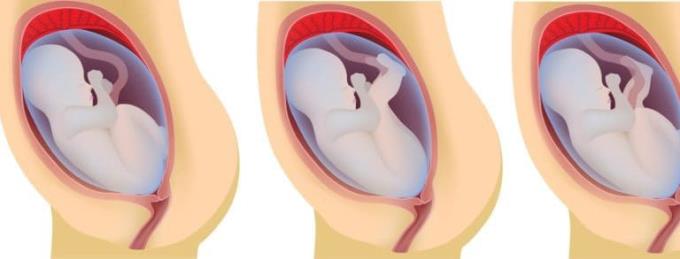Usually, the baby will return to a vertical position (crown), but with the buttock, the baby's legs and buttocks are in the forward direction.
During pregnancy, your baby will often move and change position in the womb. By 36 weeks, most babies will turn their heads in the direction of delivery and wait for the day to go outside. However, about 4% of babies have buttocks (buttocks and front legs).
Experts still do not know why the baby is born backwards , but the two most common causes are the shape of the mother's uterus and fibroids in / outside the uterus.
Types of buttock pregnancy

There are three types of buttocks: complete buttock, incomplete buttock - buttock, incomplete buttock - foot type.
Full buttocks : the baby's buttocks are facing the birth canal, the knees are folded like they are sitting cross-legged.
The buttocks are incomplete - butt type: the baby's buttocks are facing the birth canal, the legs are stretched out in front of the baby, the feet are very close together.
Incomplete buttocks - foot type: one or both of the baby's feet are facing the birth canal.
What should you do if you are pregnant?
You may be told that your baby is in the buttock position when going for an ultrasound between 18 and 20 weeks. At this stage, the doctor may perform a rotation. If the baby is still in the buttocks at the end of the pregnancy , the doctor will try to turn the pregnancy again, but this will be more difficult. Alternatively, you can also try the following methods:
You place your hands and knees on the ground in a crawling position, then slowly move forward and back. The movement of the pelvis can encourage the baby to turn his head.
If you can swim, try swimming.
Use headphones that play music or your voice and place them on your tummy, this may cause your baby to turn his head in the direction of the sound.
However, be aware that the above methods are not always effective. If the fetus is still on the buttock, you may need a cesarean section .
What are the dangers of giving birth buttocks?
For incomplete breech birth - leg type, you are at a higher risk of having the umbilical cord (umbilical cord falls into the birth canal before the fetus). At this time, the fetus can put pressure on the umbilical cord, limiting blood flow to the baby.
In cases of complete breech and incomplete buttock birth - buttock, the baby can still be delivered in the usual way, with the help of skilled doctors and health workers. Ideally, you should see your doctor for advice on the best method of delivery for you.












